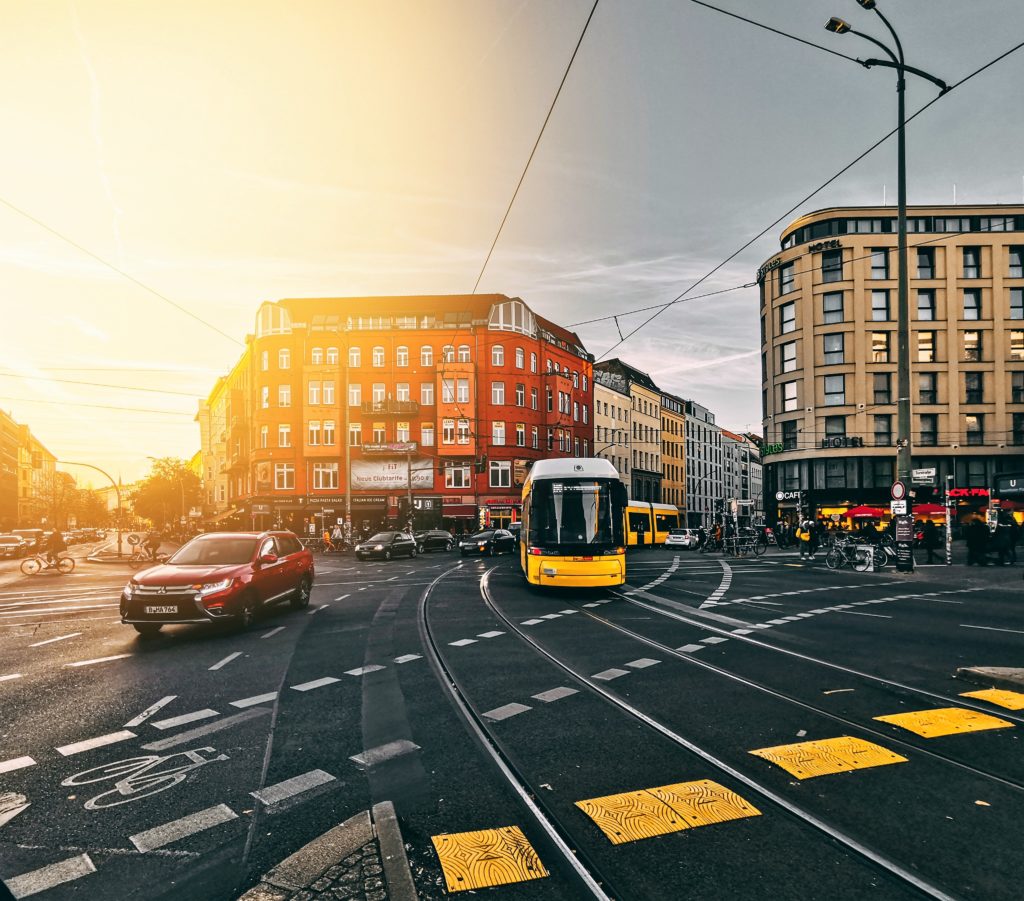The Berlin Mobility Act
It’s very hard to overlook this! With 700 advertising posters, the city of Berlin is currently campaigning for various measures to promote mobility, all of which are connected with the so-called Mobilitätswende (mobility turnaround) triggered by the Berliner Mobilitätsgesetz (Berlin Mobility Act) passed in 2018. From August onwards, “Info-Bikes” will be riding through the different districts, allowing citizens to inform themselves about concrete measures and to enter into a dialogue on traffic issues. But what are these measures? And what is the Berlin Mobility Act?
In 2016 the citizens’ initiative Volksentscheid Fahrrad (Referendum Bike) was formed in Berlin to achieve a safe and comfortable bicycle infrastructure in the city. To pass a bill in a referendum, 20,000 signatures are required within six months. The citizens’ initiative collected over 100,000 signatures in less than a month, making it the fastest referendum in Berlin’s history.
The Berlin Senate accepted the referendum and an intensive and protracted dialogue followed, also with the initiators of the referendum. Two years later, on 28 June 2018, the Berlin Mobility Act was passed as the first of its kind in Germany and came into force the following month. The purpose of the law is to maintain and further develop a safe, barrier-free transport system that is geared to the mobility needs of the city and its surroundings and at the same time is compatible with urban, environmental, social, and climatic conditions. It stipulates that bicycles and public transport will in future be given priority over car traffic in Berlin’s transport planning.
Concrete measures
Until 2035, Berlin will invest more than 28 billion euros in new S-Bahn and U-Bahn wagons, E-buses, trams and rail technology. This is the largest investment offensive in public transport ever made in Berlin. By the year 2030, all buses in and around Berlin, a total of 1,600 in number, are to be powered exclusively by electricity.
To better protect Berlin’s pedestrians, dangerous intersections will be rebuilt, the green phase of pedestrian traffic lights will be extended and numerous curbs will be lowed to create better accessibility. A total of 30 streets will be completely closed to motorized traffic at least once a week and declared play streets for children and families.
In the 2016 referendum, the city of Berlin invested five million euros in the bicycle infrastructure, in 2020 it will already be 30 million and the investments are expected to increase even more. Within Berlin, many new cycle paths will be created in contrasting colors, while more than 100 kilometers of new cycle paths will be available in the surrounding area. Wide roads, high-quality surfaces, and good lighting will ensure comfortable and, importantly, safe mobility, even over long distances.
Since the Berlin Senate attaches great importance to road safety, Vision Zero was firmly anchored in the Berlin Mobility Act. This vision describes the goal of reducing fatal road accidents to zero in the long term.
Criticism about the implementation
Undoubtedly, the Berlin Mobility Act is an exemplary step towards sustainable and safe mobility, and many cities and countries can take it as an example. But a law only has an impact on the population when it is implemented. And this is exactly what the founders of the Referendum Bike initiative feel is lacking.
Although the city of Berlin provides sufficient funds for the measures in its budget, some districts, which are ultimately responsible for the implementation, do not use the full amount. Numerous new positions have been created in the district offices, some of which have not been filled yet. The reason for this is the empty market for transport and infrastructure planners and engineers. Construction projects have to be put out to tender, depending on their scope, even Europe-wide, which in turn delays implementation.
I do not want to be so critical about the implementation, because I am already experiencing the change in the city. The cycling infrastructure, in particular, has changed noticeably, supported of course by the developments around the Corona pandemic. I like the legally enshrined measures for the mobility turnaround and I am proud to live in a city with such a vibrant democracy.
In August I will certainly visit the Info-Bike when it passes by in my district.
Well done Berlin!
